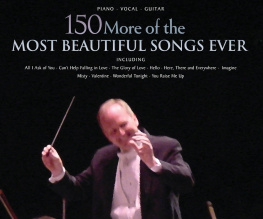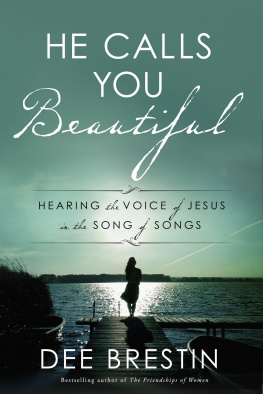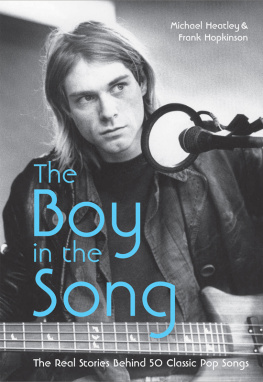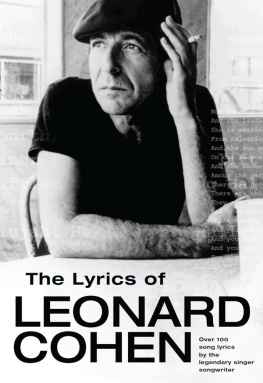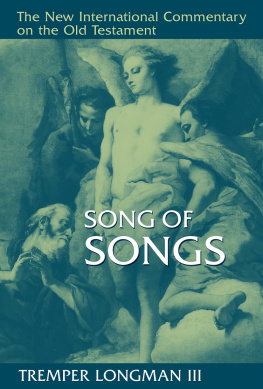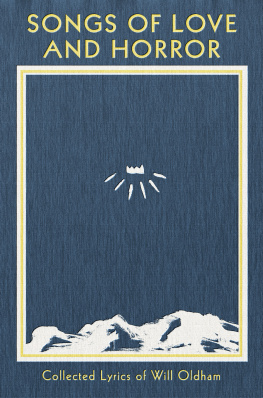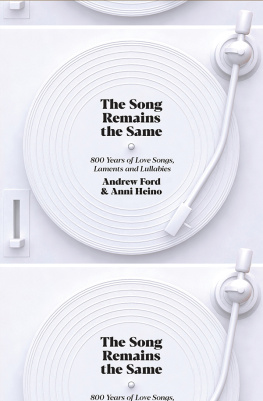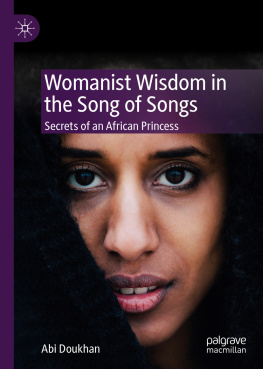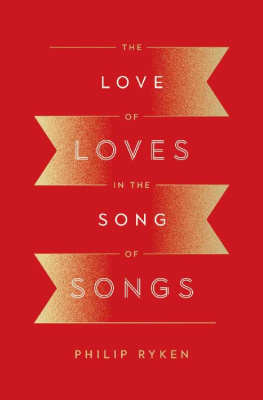First published 2011
by Paradigm Publishers
Published 2016
by Routledge
2 Park Square, Milton Park, Abingdon, Oxon OX14 4RN
711 Third Avenue, New York, NY 10017, USA
Routledge is an imprint of the Taylor & Francis Group, an informa business
Copyright 2011, Taylor & Francis.
All rights reserved. No part of this book may be reprinted or reproduced or utilised in any form or by any electronic, mechanical, or other means, now known or hereafter invented, including photocopying and recording, or in any information storage or retrieval system, without permission in writing from the publishers.
Notice:
Product or corporate names may be trademarks or registered trademarks, and are used only for identification and explanation without intent to infringe.
Library of Congress Cataloging-in-Publication Data
Scheff, Thomas J.
What's love got to do with it?: emotions and relationships in popular songs /
Thomas J. Scheff.
p. cm.
Includes bibliographical references and index.
ISBN 978-1-59451-815-7 (hardcover: alk. paper)
1. Popular musicHistory and criticism. 2. Love songsHistory and
criticism. 3. Emotions in music. I. Title.
ML3470.S33 2010
782.42164'159dc22
2010019006
Designed and Typeset by Straight Creek Bookmakers.
ISBN 13: 978-1-59451-815-7 (hbk)
ISBN 13: 978-1-59451-816-4 (pbk)
A Note to the Reader
This book seeks ro increase our understanding of popular songs and their effects on those who listen to them. In years of teaching college students, I couldn't help but notice that for many of them, these popular songs held a special meaning, as they did to me when I was their age. Here is a comment by a twenty-year-old:
I grew up listening to *NSYNC, Backstreet Boys, Spice Girls and Britney Spears. Their songs defined my life. My friends and I would know every single word, beat, and dance move. We would religiously sit in front of the TV and wait to see if our favorite song had made it to Number 1. In high school, my friends and I were fascinated with the popular bands. We bought CDs, merchandise, concerts, and TV show appearances. Listening to the songs on repeat and knowing every word became our afterschool passion.
(Lauren Tokushige)
Over the years, I heard many similar testimonies, that popular songs were much more meaningful to them than most of the other arenas of their lives. In my own case when I was their age, and for many of my students, these songs had an intense private meaning that would have been difficult to put into words. It occurred to me that I might learn a great deal if I studied the most popular of the popular songs, the Top 40, and the meaning they held for my students and their larger audience. Perhaps I could learn something important about myself, the students, and the society that we live in.
My idea was that collecting and discussing popular song lyrics with students might be a way not only of understanding the lyrics, but also of providing entry into the lives of the students, and in that way, into the workings of our society. I found that my primary interest was less in understanding the lyrics themselves and more in the students, their understanding of the songs and what meaning the songs had for them. It soon proved to be the case that discussing song lyrics was a direct path into the students' lives, not just their outer lives, their workplace, friendships, family, and romantic relationships, but also their inner lives.
The first aim of this book is to use popular lyrics as a mirror, perhaps a magnifying glass, that will shed light on the nature of our society. The second aim is explore ways in which our society might be changed by helping students understand themselves and others better, and by encouraging the invention of new kinds of popular lyrics and other forms of art and media. Although this book has little to say about film and still less about TV, the underlying principles may well be the same.
What makes popular songs popular? In most cases, artistic and educational values don't seem to matter. My background in the sociology of emotions suggested to me that what matters is emotions, on the one hand, and relationships, on the other. Lyrics that evoke unresolved feelings of love, pride, grief, anger, and other emotions have dominated the popular charts for many years.
More subtly, these lyrics also involve the relationship with the loved one, implying closeness. Surprisingly, however, upon inspection many of the relationships implied can be seen as not close. In fact, it will be clear that the relationships implied in most love lyrics are alienated, but the lack of closeness is disguised and hidden.
Drawing these two components together, popular love lyrics present a picture of an imagined social-emotional world. The nature of basic emotions and relationships will be outlined at some length, since they are little understood in modern societies. My many years of study of the social-emotional world have suggested that modern societies tend to ignore this world. Thought, perception, behavior, and the material world come first, emotions and relationships, last.
Similarly, since modern societies are highly individualistic, the nature of relationships usually takes a backseat to qualities of individuals. Unlike traditional societies, where the focus is on social relationships, modern societies focus on the self-reliant individual. The usual treatment of the social-emotional world in modern societies is limited, casual, and I have found, often misleading.
A 2000 cartoon in the New Yorker magazine portrays this situation graphically. A man lying on a psychoanalyst's couch is saying: "Look, call it denial if you like, but I think what goes on in my personal life is none of my own damn business." In modern societies, behavior, thought, and the material world are our business, but not emotions and relationships.
This book compares the imagined emotional world of popular songs with a more realistic world of emotions and relationships that I have glimpsed as a social scientist, and offers suggestions toward improving both worlds.
You will note that many of the lyric quotes in this book are quite brief, usually only two lines. This kind of abbreviation seemed necessary because of copyright restrictions. Two lines, but no more, are deemed "Fair Use" without copyright permission. I was willing to do this because the complete lyrics are readily available at no cost to the reader on one or another of the many, many online lyric Web sites. If you want to see a complete lyric, just Google the title. In most cases, you will find not only the words, but also the music.
Which brings up one of the limitations of my approach. Although occasionally there will be a mention of the relation between the words and music of a particular song, this book is overwhelmingly about words, not music. I am not a musician myself, so I have been unable to provide a sustained analysis of an important part of the popular song world.


